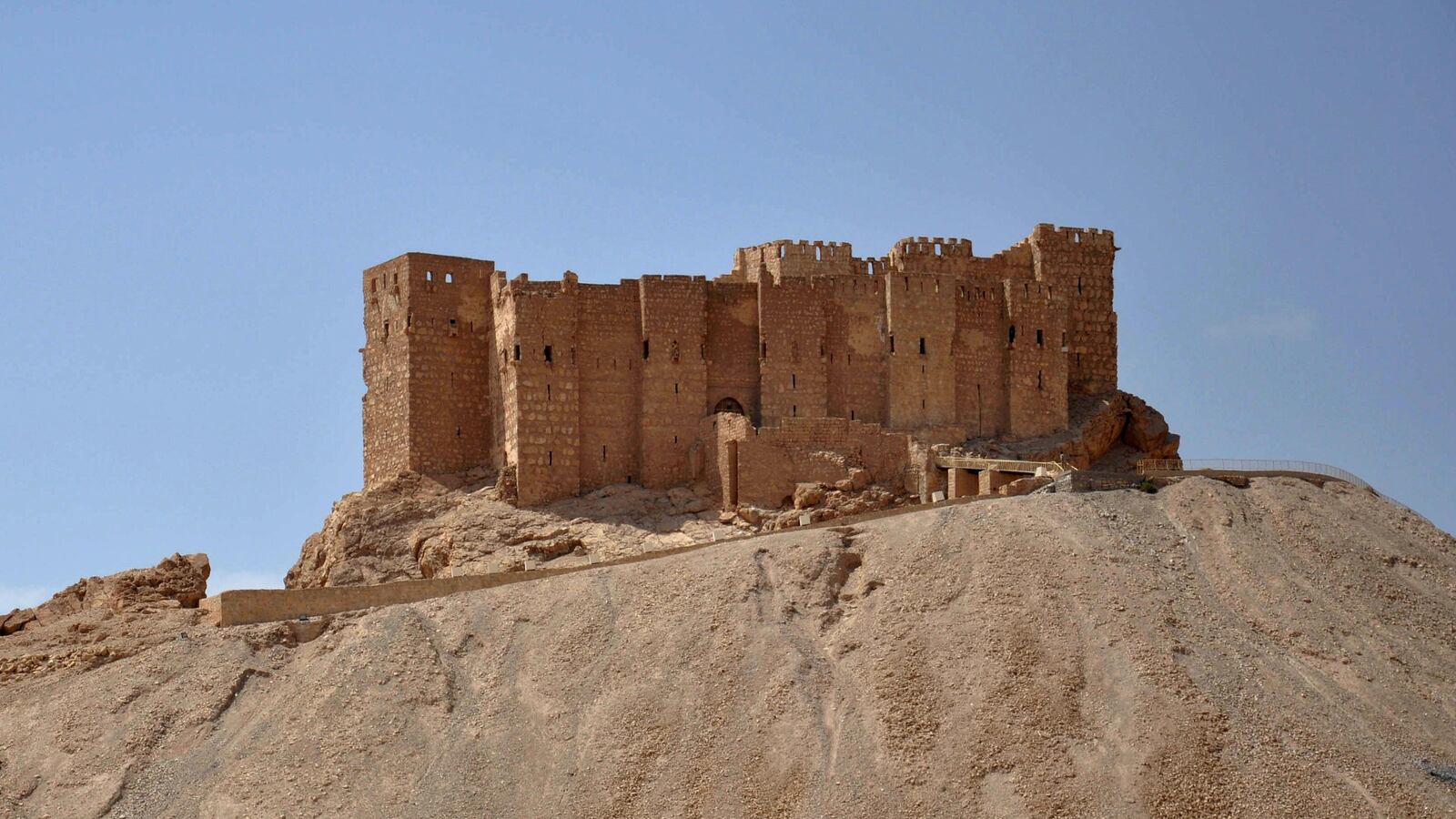“This is the entire world’s battle,” said Syrian antiquities chief Maamoun Abdulkarim on Wednesday, referring to the imminent entry of ISIS troops into the ruin-rich city of Palmyra. It is also the world’s litmus test, to determine just how far outside the global community ISIS wants to place itself. The Islamic State has looted and destroyed antiquities many times already, but the stakes are higher now, both because media scrutiny has increased, and because the site at Palmyra is of a different order, historically and archeologically, than the ruins and museums ISIS has occupied in recent months.
In the Iraqi cities of Nimrud, Mosul, and Hatra, ISIS has carried out highly publicized attacks on statues of Assyrian gods, kings, and royal mascots like the famous lamassu—human-headed bulls that once guarded the palace of Assurbanipal. Destruction of statues fits with the group’s stated goal of cleansing these places of non-Islamic culture. “Idols” have traditionally been the primary targets of religious zealots, including early Christians who melted down marble busts of Greco-Roman deities in their lime-kilns. The Taliban’s 2001 dynamiting of the colossal buddhas of Bamiyan, in central Afghanistan, marked the start of the current Islamic campaign against religious statuary—a campaign that has its roots in the legends of the Prophet himself, who is said to have broken up 360 statues he found on a visit to Medina.
Aware of these precedents, and of the Muslim code that forbids artistic representation of the human form, Syrian antiquities caretakers have carted off all moveable statuary from the Palmyra ruins. ISIS will find few sculptures at the site that can be smashed in front of video cameras—or sold on the black market to raise revenue (the fate of many Iraqi artifacts). What it will find instead are the columns and walls of ancient buildings, some of them pagan religious shrines like the temples of the gods Bel and Baalshamin, but others purely secular in nature: an odeon-style theater, marketplaces and baths, government complexes, a military enclosure. These structures, in most cases, bear no trace of the graven images on which ISIS has thus far vented its rage, and no connection to ancient pagan worship.
To topple standing columns, or crack the stone benches of a theater, would carry different symbolic weight than the sledgehammering of a statue. These monuments proclaim no ideology and promote no god-king. They are remnants of the daily life of ancient Palmyrenes, a life lived at the crossroads of Assyrian, Babylonian, Greek, and Roman cultures and made prosperous by trade rather than conquest. The question that faces ISIS, as it takes possession of these ruins, is whether it wants to be a smasher of idols, following (in whatever misguided way) the dictates of the Koran, or a mere vandal, destroying precious antiquities out of triumphalism and nihilistic pleasure.
A similar question faced the Iranian revolutionaries who ousted Shah Reza Pahlevi in 1979 and took control of the desert site of Persepolis, with its ruined palaces dating to the era of Persian emperors Darius and Xerxes (the 6th and 5th centuries B.C.). One faction of the new government, led by extreme hard-liner Sadegh Khalkhali, urged the destruction of the ruins, both because of their pre-Islamic provenance and their association with the Shah’s regime (Pahlevi had used the site as the backdrop of a huge, self-promoting fête in 1971.) But other views prevailed. Khalkhali’s one attempt to incite violence against the ruins, in a threatening speech made in Persepolis, was ended by a stone-throwing mob.
That was a case in which Iranians, lineal descendants of the ancient Persians, remained committed to the shared past that they saw enshrined at Persepolis, amid palaces once torched by Alexander the Great. But ISIS, self-invented on the model of a pan-Islamic caliphate, stands outside history and ethnic identity. None of the remains at Palmyra belong to its national legacy, certainly not the Hellenistic Greek or Roman ruins that may all too easily be regarded as symbols of modern Western hegemony over the Middle East. Palmyra was in fact an independent, non-monarchic state for much of its history, beholden neither to the Greek Seleucid kingdom that dominated its region, nor to Imperial Rome, nor to the great Parthian empire to its southeast. But such historical subtleties may not matter when the video cameras start to roll.
Art vandalism, in the modern West at least, is among the most desperate gambits of the delusional and the mentally ill. Psychotics have felt driven to throw acid at Leonardo’s “Mona Lisa,” attack Michelangelo’s “David” with a hammer, and stab holes into Rembrandt’s “The Night Watch,” because they sense that such atrocities will garner attention, and provoke outrage, worldwide. Now that ISIS is in possession of a UNESCO World Heritage site, in which it will find very little to offend the Islamic values it has claimed to act on elsewhere, it will show the global community just how crazy it really is.






